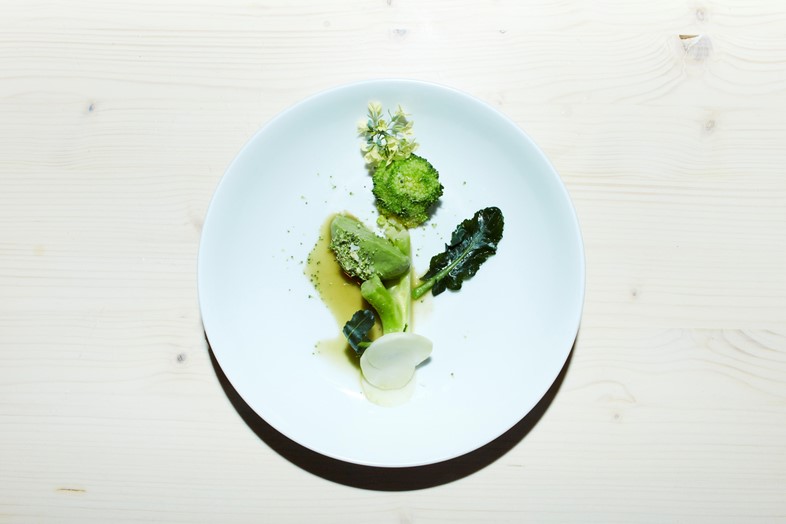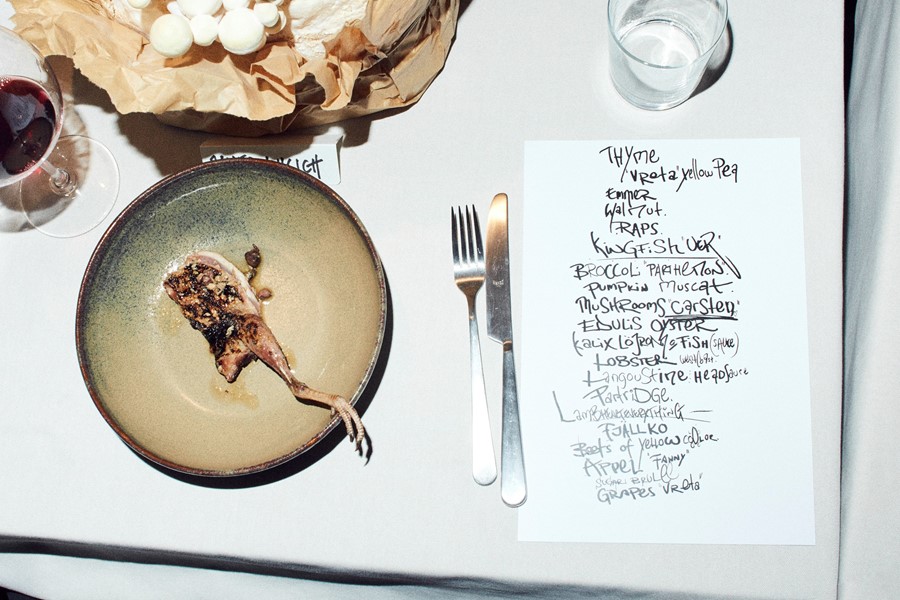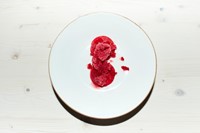James Greig attended Carsten Höller’s notorious Brutalist Dining Experience in Stockholm. Here’s what he learnt
“We are born as Brutalist eaters, as mother’s milk is essentially Brutalist.” What could such a bold statement, taken from the artist Carsten Höller’s Brutalist Kitchen Manifesto, possibly mean? This October, I attended his Brutalist Dining Experience at Restauranglabbet in Stockholm, the latest instalment of an ongoing series in which he attempts to apply the principles of this much-discussed architectural movement to cuisine. The experience raised some interesting questions about the nature of Brutalism, and how its influence is felt beyond the sphere of architecture today.
Brutalism has become, by some distance, the most talked about form of 20th-century architecture – almost to the point of cliché. Eye-wateringly expensive books dedicated to the subject still adorn the coffee tables of countless flats in Hackney or Bushwick; while an interest in Brutalism takes pride of place in the dating-app bios of any number of left-leaning, Ian Sinclair-reading millennials. It hasn’t always been widely popular – in many cases coming to serve as a symbol of neglect and impoverishment – but recent community-led attempts to save buildings such as Robin Hood Gardens in London and Birmingham’s Central Library have helped prove how far opinions have changed. More and more people are beginning to believe, correctly, that Brutalist buildings can be something other than inhuman monstrosities.
Despite this, certain misconceptions about Brutalism persist. Anyone with a passing interest is aware that the name derives from the French for raw concrete – Béton brut – rather than being a description of the style, but it’s hard to divorce the two notions when much of it looks so, well, brutal. When we think of Brutalism, a certain set of images readily comes to mind: the Barbican, perhaps, or the National Theatre. We probably think about buildings with bold shapes, imposing scale, and a harsh quality. But this isn’t necessarily the best way of thinking about Brutalism. As architectural critic Reyner Banham recently concluded, Brutalism is more an ethic than an aesthetic of architecture. It’s possible to adhere to the former without necessarily echoing the latter – and arguably, this is what Höller’s Brutalist kitchen seeks to do.
Just as Brutalist architecture predominantly uses concrete for the entirety of a building (or as much as possible), Höller’s cuisine is based around the sole use of one ingredient per dish. In the manifesto, he offers an example: “instead of Duck with Orange Sauce, Duck with Duck sauce is served.” This principle was strictly adhered to throughout the dinner: one of the dishes showcased “the three stages of bread”; while another featured broccoli in three forms: florets, stalk and souffle. This approach is similar to the way in which Brutalist architecture exposed the nuts and bolts of buildings, which had previously been covered over – think of the external stairways at the National Theatre. “It’s not so much about exposing the cooking, though,” Höller says, “it’s more about the taste of the ingredient – you’re not hiding it through taste layering. If you make a mistake, you can’t just cover it up with some sauce. It’s an honest way of cooking.”
To complement the food, all of the wine served throughout the evening was natural – that is, unfiltered and with no additives or sulphites. It might be a stretch to argue that natural wine is Brutalist, per se, but it does match Höller’s principles of Brutalist cuisine. Its popularity also suggests that people are seeking out a new purity in what they consume.
One of the other major principles of Brutalist cuisine is the use of “overlooked, hard-to-get or rare” ingredients. This aspect is harder to square with the architectural tradition – after all, Brutalism is hardly renowned for its deployment of quirky materials. “It’s more about overlooked, rather than rare, ingredients,” Höller says. “Take rapeseed, for instance, which we served at the dinner. 20 years ago, rape was inedible to humans because it contained two elements which were toxic. Now, due to selective breeding, these toxic elements have been grown out, and we have a whole new plant at our disposal.” Other unusual ingredients at the dinner included a prominently-clawed partridge which looked like it had escaped from Jurassic Park and fjallko – a savoury ice cream made from bovine bone marrow. It was considerably nicer than it sounds.

The extent to which a focus on underused ingredients can be described as Brutalist is debatable but it does make for an interesting dining experience. That said, the emphasis on unusual ingredients came to be my undoing: I forced myself to eat an extremely bitter young walnut shell in its entirety, all the while writing an angry screed in my notebook about how disgusting it was, before being told that it was not intended to be edible. In my defence, this surely contravened point seven of the manifesto: “There should be no decoration on the plate.”
Above all, it seems the aspect of Brutalism from which Höller has taken most inspiration is its essentialism. Rather than being minimalist (a minimalist meal would be, say, a single boiled egg), it’s about emphasising a particular component. If we take this view of Brutalism, it’s clear that its influence can be felt today in a range of forms, from fashion to furniture design to fragrance. Take Rick Owens, for instance, who has often spoken about the influence Brutalism has had on his work. Both his clothes and furniture share a certain severity (which he has described as ‘Brutalist’ in nature) and a tendency to emphasise a single quality – his imposing alabaster bed-frames, for instance, or his perennial textile studies in black. We can see something similar at play in the work of Issey Miyake, or The Row, with their oft-austere, monochromatic, single-material garments that showcase sophisticated artisanal techniques – which often results in what might be considered a bold, brutal silhouette. While these brands may not be obvious proponents of the Brutalist way of life, they could certainly be said to embody the ethic, and perhaps even the aesthetic.
If we’re taking single-ingredient essentialism as a Brutalist trait, it’s also worth considering trends in skincare and fragrance. As well as Aesop’s retail interiors embodying a Brutalist aesthetic, its products also emphasise the ethics of Brutalism, with a focus on craftmanship, rawness and purity – ingredients-led, taking centre stage on branding, boldly proclaiming the lack of artificial additives. This attitude extends to even the tiniest details, such as the undyed, untreated raw canvas bags in which their products are proudly carried – lightyears ahead of the no-plastic movement. Anyone with a keen interest in fragrances will also see Brutalist parallels in the industry-leading Escentric Molecules, whose products are so iconic and complex that it’s hard to believe they contain just one ingredient. It bears repeating that none of this is about simplicity – the processes behind these perfumes are often extremely technical and complex. Instead, it’s about isolating and elevating the aspect of a design which is most important.
So why are we seeing this movement towards, if not specifically simplicity, then conceptual purity? Höller suggests that it could be a response to the clutter and complexity of 21st-century life. “There’s a real sense of saturation today,” he says, “everything is so readily available, whether that’s via the internet or simply being able to access every type of cuisine imaginable – and not just in major cities. So Brutalist cuisine is about getting back to something essential.”
I found the Brutalist Kitchen a singular and memorable dining experience – there was something refreshing about being able to focus on a single flavour with no distraction. Höller hopes that we’ll soon see Brutalist dishes becoming a common menu staple, if not entire restaurants devoted to the style. If this does happen, then it’s definitely worth trying.



